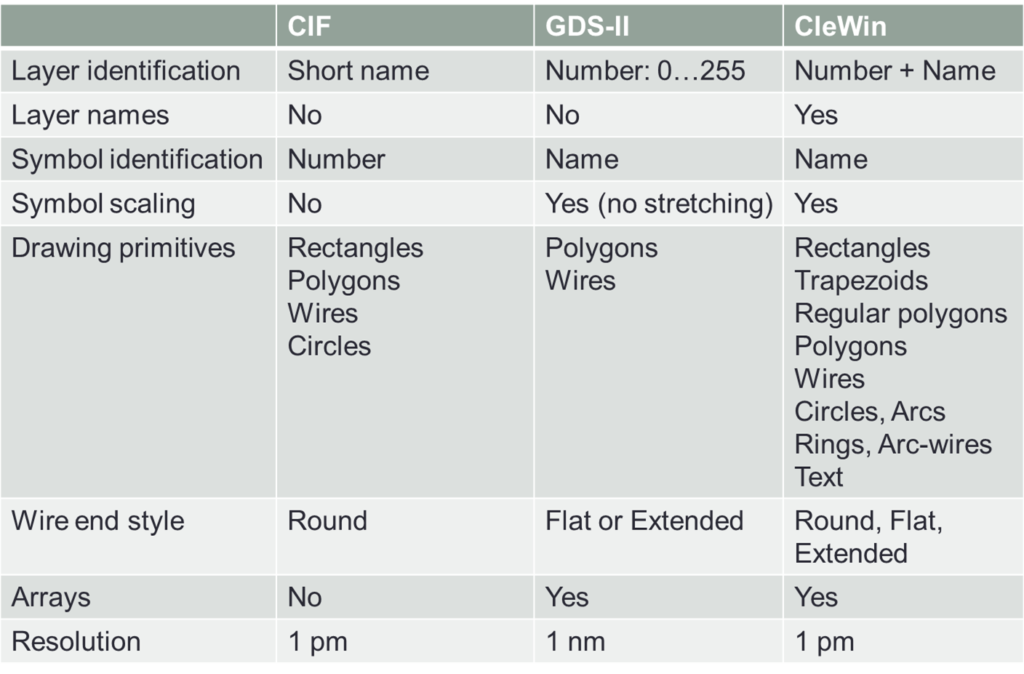CleWin supports the three main file formats used for photomask design, i.e. CIF, GDS-II and OASIS:
- CIF – Caltech Intermediate Format
A human readable text file format developed for the design of VLSI chips in the 1970’s and 80’s, see e.g. Carver A. Mead and Lynn A. Conway, Introduction to VLSI Systems, Addison-Wesley, 1980.
CIF is CleWin’s default file format because it can be easily extended to support additional features. - GDS-II – Graphic Data System
A binary database format developed by Calma Company in the 1970’s. It has been the de-facto industry standard since the mid-1980’s. - OASIS™ – Open Artwork System Interchange Standard
The OASIS format is trademark of Semiconductor Equipment and Materials International (SEMI). It was introduced in 2004 as a more efficient replacement for GDS-II.
CIF, GDS-II and OASIS are all hierarchical file formats. That is, objects can be combined into “symbols” (or “cells”) and placed in a design many times (“symbol instances”). This is very useful for repeating structures: changing the symbol definition will change all instances simultaneously. Furthermore, it can significantly reduce file size because data for the symbol definition is only stored once.
A photomask design typically corresponds to a “layer” in the file, although layers can also be used for other purposes (e.g. for guidelines or showing chip outlines).
Each file format imposes specific limitations on a design. For example, the CIF format only allows rectangles, polygons, wires and circles as basic shapes and the GDS-II format only allows polygons and wires.

